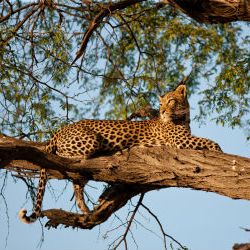Leopards Have Lost An Awful Lot Of Their Historic Range

Leopards all over the world have lost about 75 per cent of their historic range the results of a new survey suggest. The survey is the first effort at getting a sense of the leopard’s global paw print. The survey was conducted in collaboration with the Zoological Society of London, Panthera and National Geographic Society’s Big Cats Initiative. The researchers looked at over 1,300 sources of information regarding the leopard’s historic and current ranges.
Not a pleasant picture
The results of the survey did not present a pleasant picture for the Panthera Pardus and its nine subspecies. The survey results showed that today the leopard occupies a range of 3.3. million square miles which is substantially less than its historic range of 13.5 million square miles. Andrew Jacobson of ZSL who was the lead author of the study says the results challenge the conventional assumption that the species is relatively abundant and not seriously threatened.
The species has all but disappeared in some parts of the world
The research team emphasised the fact the leopards have all but disappeared in several parts of Asia and the species continues to struggle throughout Africa. They add that more attention needs to be paid to subspecies which are most at-risk.
“We found that while leopard research was increasing, the research effort was primarily on the subspecies with the most remaining range, whereas subspecies that are most in need of urgent attention were neglected. Of these subspecies, the Javan leopard (P. p. melas) is currently classified as critically endangered by the IUCN, while another — the Sri Lankan leopard (P. p. kotiya) — is classified as endangered, highlighting the urgent need to understand what can be done to arrest these worrying declines.”the authors wrote



